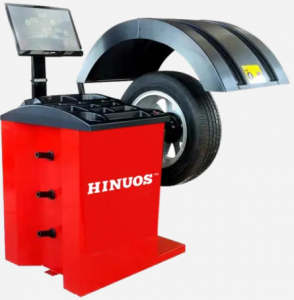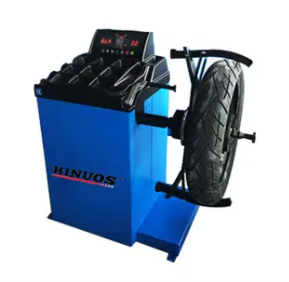Definition:

Tire balancer is used to measure the unbalance of the rotor, tire balancer belongs to the hard-supported balancing machine, the swing frame stiffness is very big, the unbalance of the rotor is corrected by the dynamic balancing machine measuring results, in order to reduce vibration, improve performance and improve product quality, the vibration of rotor or the vibration acting on the bearing can be reduced to the allowable range.
Features:
An unbalanced rotor creates a pressure on its supporting structure and on the rotor itself during its rotation, resulting in vibration. Therefore, the dynamic balance of the rotor is very necessary, tire balancer is the rotor in the state of rotation dynamic balance comparison. The role of dynamic balance is: 1, improve the quality of rotor and its components, reduce noise; 2, reduce vibration. 3. Increase the service life of the supporting parts (bearings) . Reduce user discomfort. Reduce power consumption.
Mode of transmission:
The driving mode of the rotor driven by tire balancer includes ring-belt driving, coupling driving and self-driving. Loop drag is the use of rubber or silk loop belt, by the motor pulley drag rotor, so loop drag rotor surface must have a smooth cylindrical surface, the advantage of the loop drag is that it does not affect the unbalance of the rotor, and the balance precision is high. Coupling drive is the use of universal joints will be the main shaft of tire balancer and the rotor connected. The characteristics of the coupling drive is suitable for the rotor with irregular appearance, can transfer a larger torque, suitable for drag fan and other larger wind resistance rotor, the disadvantage of coupling drag is that the unbalance of the coupling itself can affect the rotor (so the coupling must be balanced before use) and introduce interference that can affect the accuracy of the balance, in addition, a large number of connecting disks are made to accommodate different types of rotors. Self-drive is the use of the rotor's own power rotation. Self-drive is the drag method which has the least influence on the balance precision, and the balance precision can reach the highest.
How it works:
Balancer is a machine that measures the size and position of the unbalance of a rotating object (rotor) . When the rotor rotates around its axis, the centrifugal force is produced because of the uneven mass distribution relative to the axis. This kind of unbalance centrifugal force can cause vibration, noise and acceleration bearing wear on the rotor bearing, which will seriously affect the product performance and life. Motor rotor, machine tool spindle, fan impeller, steam turbine rotor, automobile parts and air-conditioning blades and other rotating parts in the manufacturing process, need to be balanced to run smoothly. The mass distribution of the rotor relative to the axis can be improved by correcting the unbalance of the rotor according to the data measured by tire balancer, the vibration of the rotor or the vibration force acting on the bearing is reduced to the allowable range when the rotor rotates. Therefore, tire balancer is to reduce vibration, improve performance and improve quality of the necessary equipment. Usually, the balance of the rotor includes two steps: the measurement and correction of the unbalance. tire balancer is mainly used for the measurement of the unbalance. The main performance of tire balancer is expressed by two comprehensive indexes: minimum reachability remaining unbalance and unbalance reduction rate. The former is the minimum of the residual unbalance achieved by tire balancer, which is the index to measure the highest balancing capacity of tire balancer, while the latter is the ratio of the reduced unbalance to the initial unbalance after a correction, it is a measure of the efficiency of the balance, usually expressed as a percentage.

Post time: Apr-06-2023




